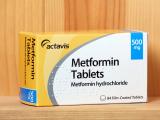Adolescents' use of tobacco, cannabis, and alcohol did not change with stay-at-home orders in northern rural California, but their physical activity dropped, according to a study today in JAMA Pediatrics.
The researchers included two cohorts of 9th and 10th graders in their 1,006-person study: 521 who were enrolled in spring 2019 and 485 who were enrolled in fall 2019. Originally, the survey was designed to assess just physical activity and substance abuse in general, with an initial survey and a 6-month follow-up. The researchers had chosen this region because youth tobacco use is historically higher in small communities.
Because of the time between the two cohorts, those in the fall 2019 group had their 6-month follow-up survey well after the state's stay-at-home began on Mar 18, 2020 (they continued through September 2020). While the study wasn't able to capture local adherence to COVID mitigations, the researchers did note that 36% of people who lived in the region and responded to the California Health Interview Survey said they experienced unemployment or reduced work hours or income because of the pandemic.
"Given that healthy and unhealthy behaviors that are established in adolescence often extend into adulthood, a deep exploration into the association between adolescent health behaviors during the pandemic and health outcomes is needed in the post–COVID-19 era," write Sherry L. Pagoto, PhD, and David E. Conroy, PhD, in a related JAMA Pediatrics commentary.
E-cig decline unrelated to COVID
Initial survey respondents showed that in the past 30 days, most students didn't partake in e-cigarettes (62.4% never, 18.7% in the past 30 days), other tobacco forms (94.8%), cannabis (5.0% never, 16.3% in the past 30 days), or alcohol (86.2%).
Substance use during 6 or more days in the past 30 days ranged between 5.2% (non–e-cig tobacco users) and 8.0% (e-cig users). Values were comparable across both cohorts, and alcohol was only reported with a yes/no 30-day usage.
Stay-at-home orders did not appear to affect use of any substances, but independently, e-cig usage declined over time, going from 17.3% to 11.3% in the spring 2019 cohort and 19.9% to 10.8% in the fall 2019 cohort. The researchers suggest this could be due to media spotlights on e-cig and vaping-associated lung injury, noting that the results correspond with US National Youth Tobacco Survey data, which show a decline in monthly e-cig use from 27.5% to 19.6%.
While the study did not reflect an increase in substance use that previous studies found in adults, it also didn't probe changes in individual behaviors or consumption levels.
The study authors write, "These findings suggest a need for parents and schools to continue substance use prevention efforts."
Pagoto and Conroy add, "That adolescents continued previous substance use at a time when face-to-face social interactions were restricted is surprising and raises questions about the social context (or lack thereof) in which adolescents were using substances and how and where they obtained substances during stay-at-home orders."
Physical activity declines 50%
As for physical activity, a change in frequency was strongly associated with stay-at-home orders. Physical activity was defined as exerting enough effort to sweat or breathe hard for at least 20 minutes, and physically active students were defined as being active for at least 5 days of the week.
The fall 2019 cohort had a 51% reduced likelihood of physical activity during the 6-month follow-up compared with the spring 2019 cohort (95% confidence interval of adjusted odds ratio, 0.35 to 0.69). The spring 2019 cohort saw a statistically insignificant change, going from 53.7% to 52.9%; whereas, the percent of physically active teens dropped from 54.0% to 38.1% in the fall cohort.
Both the researchers and the commentary authors attributed this to lifestyle changes such as the cancellation of school sports, potentially restricted exercise venues such as gyms and park trails, and less active commuting.
Pagoto and Conroy discuss the larger context of this shift, comparing it to the activity decline commonly seen when teenagers move onto adulthood. "[That] is also a time when their participation in organized sports and active commuting diminishes," they write.
"The degree to which external factors, such as sports and active commuting, drive physical activity levels in youth has implications for how resilient their active lifestyles may be when circumstances disrupt these activities."
Physically distanced engagement methods (eg, apps, online interest groups, virtual exercise classes) are often geared toward adults, but Pagoto and Conroy say teenagers could benefit from them as well. Parental modeling, the facilitation of new activities, and linking exercise with goal achievement may also build up teens' intrinsic motivation.
They write, "Interventions may be needed to ensure that physical activity levels rebound to prepandemic levels to prevent this cohort of adolescents from experiencing a premature decline in physical activity, which could track into adulthood and increase the risk for chronic disease later in life."
The study authors conclude, "Enhancing physical activity during a pandemic may require novel and creative strategies, especially given suspended interscholastic sports seasons, potentially restricted access to exercise venues, such as gyms, recreation centers, parks and trails, and restrictions on nonessential travel to exercise spaces."





















